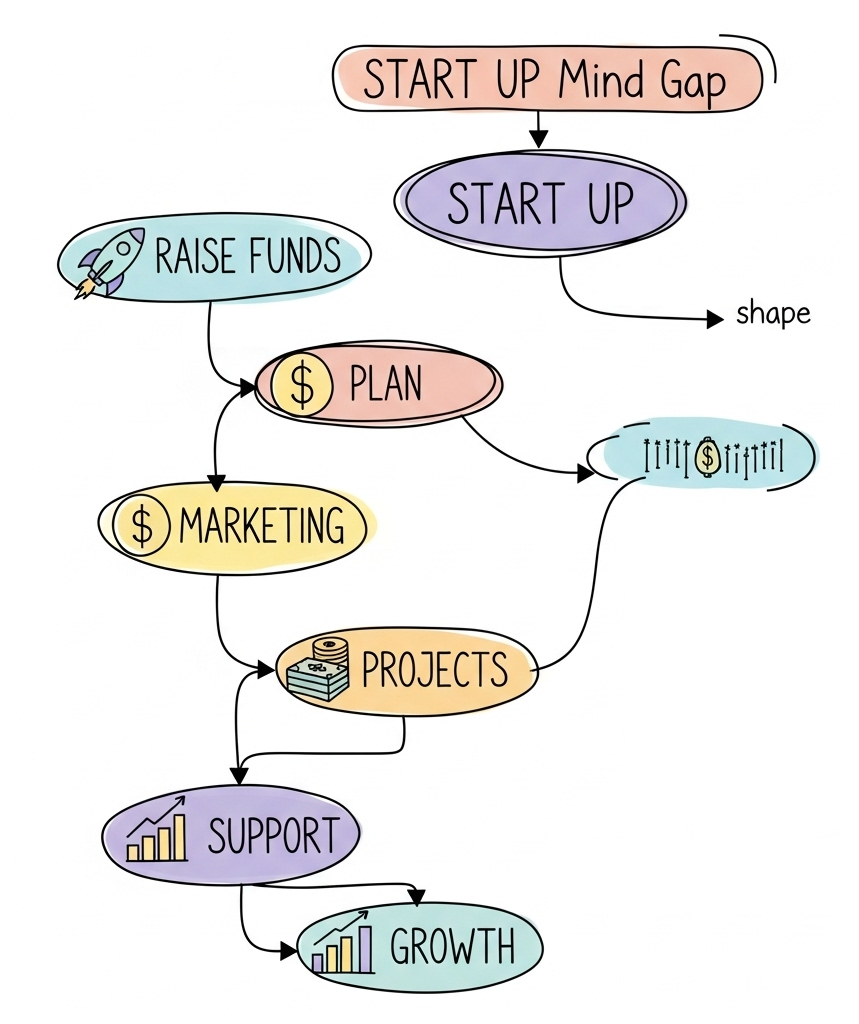Now Reading: The Power of Visual Thinking
-
01
The Power of Visual Thinking
The Power of Visual Thinking
Do you ever feel like your head is a whirlwind of thoughts, juggling project deadlines, creative sparks, and daily to-dos all at once? It’s a common feeling in our fast-paced world, where information overload can leave us feeling stuck and overwhelmed. Brilliant concepts can easily get lost in the shuffle, and complex problems seem impossible to untangle. What if there was a simple, yet scientifically-backed way to bring order to that chaos, connect ideas in new ways, and unlock your true creative potential? Welcome to the world of mind mapping – a visual thinking technique that can revolutionize how you learn, brainstorm, and innovate.
What is a Mind Map?

At its heart, a mind map is a diagram that visually organizes information in a way that mirrors your brain’s natural thinking process. Unlike traditional linear notes (like lists or paragraphs), a mind map is a radiant structure. It starts with a single central idea and expands outwards with associated thoughts and concepts. This non-linear approach allows you to capture ideas freely as they come, fostering a more organic and creative flow. It’s built to harness the power of association, making connections you might otherwise miss.
- Central Idea: This is the starting point—your main topic, problem, or project. It sits right in the middle, acting as the anchor for all your other thoughts.
- Branches: Major themes and key ideas radiate directly from the center. Each branch represents a primary category, allowing you to structure your information clearly.
- Keywords & Images: Instead of long sentences, mind maps use single keywords or short phrases on each branch. This brevity, combined with colors and images, makes the information highly scannable and much easier for your brain to remember.
Key Benefits of Mind Mapping
Enhanced Creativity
The free-form structure liberates you from rigid, linear thinking. It encourages a natural flow of ideas, helping you make surprising new connections and spark genuine innovation.
Improved Memory
Using colors, images, and spatial organization engages both the logical and creative sides of your brain. This whole-brain thinking dramatically improves memory retention and recall.
Better Organization
Effortlessly see the big picture and the fine details all at once. A mind map brings immediate structure and clarity to complex topics, turning a jumble of information into an organized overview.
Effective Problem Solving
Visually break down complex problems into manageable parts. This allows you to analyze relationships between different elements and see challenges from new angles to find solutions.
Improved Memory
Using colors, images, and spatial organization engages both the logical and creative sides of your brain. This whole-brain thinking dramatically improves memory retention and recall.
Better Organization
Effortlessly see the big picture and the fine details all at once. A mind map brings immediate structure and clarity to complex topics, turning a jumble of information into an organized overview.
When to Use Mind Maps
Mind maps are an incredibly versatile tool for work, studies, or personal projects. Instead of a wall of text, you can use a mind map for:
Enhanced Creativity
The free-form structure liberates you from rigid, linear thinking. It encourages a natural flow of ideas, helping you make surprising new connections and spark genuine innovation.
Improved Memory
Using colors, images, and spatial organization engages both the logical and creative sides of your brain. This whole-brain thinking dramatically improves memory retention and recall.
Effective Problem Solving
Visually break down complex problems into manageable parts. This allows you to analyze relationships between different elements and see challenges from new angles to find solutions.
Improved Memory
Using colors, images, and spatial organization engages both the logical and creative sides of your brain. This whole-brain thinking dramatically improves memory retention and recall.

